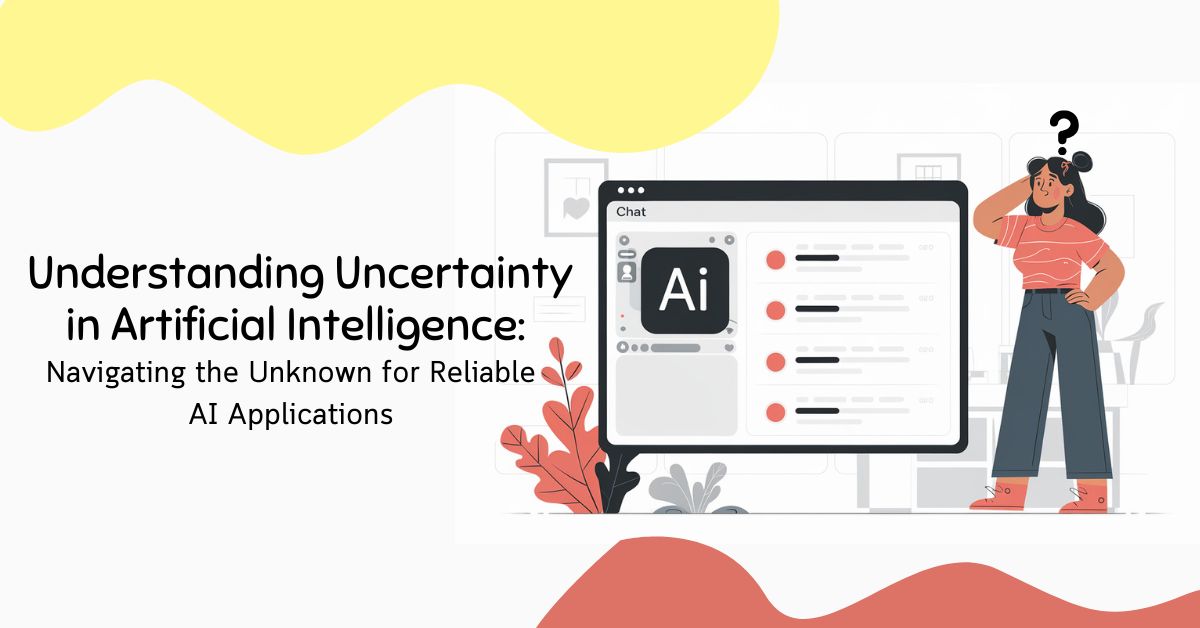Understanding Uncertainty in Artificial Intelligence
In the dynamic landscape of artificial intelligence (AI), the concept of “uncertainty in artificial intelligence” has emerged as a pivotal area of discussion. Uncertainty is not just a technical nuance but a fundamental challenge that AI researchers and developers must grapple with to ensure the technology’s efficacy and reliability. From making critical decisions in healthcare to driving autonomous vehicles, uncertainty plays a significant role in how AI systems operate and impacts their acceptance and effectiveness in our lives. Understanding uncertainty is imperative for refining AI systems and making them dependable and trustworthy in various applications.
What is Uncertainty in Artificial Intelligence?
Uncertainty in artificial intelligence refers to the unpredictability and lack of precise knowledge within AI systems when processing information or making decisions. Unlike general uncertainty, which pervades many domains, in AI, it arises from multiple sources such as data noise, model limitations, and changes in environmental conditions. This uncertainty can significantly impact AI performance, leading to errors or unreliable outputs.
In AI, uncertainty is typically categorized into two main types: aleatoric and epistemic. Aleatoric uncertainty, often referred to as statistical uncertainty, is due to inherent variability or chance and cannot be reduced. In contrast, epistemic uncertainty stems from a lack of knowledge or information and can potentially be mitigated through data acquisition or model improvement.
Aleatoric vs. Epistemic Uncertainty
Aleatoric uncertainty is akin to the unpredictability one faces when rolling dice — it’s a built-in randomness that cannot be foreseen nor reduced. It represents intrinsic variability in data or an environment. For instance, in medical imaging, the natural differences in patient anatomies contribute to aleatoric uncertainty.
On the other hand, epistemic uncertainty can be thought of as an information gap. Consider driving in thick fog with limited visibility; the uncertainty in your environment can be reduced by tools like fog lights. In AI, epistemic uncertainty might arise from insufficient training data or a lack of understanding of an AI model’s complexity. It encapsulates uncertainties that can be addressed or lessened by improving inputs or models.
Why is Managing Uncertainty Important in AI?
Unmanaged uncertainty in AI can lead to a cascade of problems such as erroneous predictions and poor decision-making. This uncertainty can compromise the reliability and safety of AI systems, which is critical in sectors where precision is paramount. For example, in healthcare, an AI system misinterpreting a medical image can result in incorrect diagnoses, affecting patient outcomes and healthcare provider trust.
Real-world instances spotlight these challenges. Consider autonomous vehicles: high levels of uncertainty in sensor data or unforeseen driving scenarios can culminate in accidents or system failures. Recognizing and managing uncertainty is essential to bolstering the trust and accuracy necessary for AI systems to operate safely and effectively.
Impact on Various Industries
Across different industries, the implications of uncertainty are profound. In healthcare, it can impact diagnostics and treatment plans, making uncertainty management crucial for patient safety. In the realm of autonomous vehicles, handling uncertainty is vital for making accurate real-time decisions to ensure passenger and pedestrian safety.
The finance industry also grapples with uncertainty in AI systems, especially pertaining to market predictions and fraud detection. A mismanaged uncertainty could lead to significant financial losses or security breaches. Therefore, addressing uncertainty is integral to fostering AI system reliability, regardless of the industry.
Methods to Handle Uncertainty in AI
To effectively tackle the issue of uncertainty in artificial intelligence, various methodological approaches are employed, each with its strengths and challenges. Among these methods are probabilistic models, Bayesian inference, and Monte Carlo methods, which provide structured frameworks to assess and manage uncertainty.
- Probabilistic Models: These models predict outcomes based on probability distributions. They help quantify uncertainty in AI system outputs by providing a range of possible predictions with associated likelihoods.
- Bayesian Inference: This method updates the probability estimate for a hypothesis as more evidence or data becomes available. Bayesian inference is particularly adept at managing epistemic uncertainty by iterating and refining predictions as new information is gathered.
- Monte Carlo Methods: These computational algorithms rely on repeated random sampling to obtain numerical results, offering insights into the potential variability in AI predictions and helping to simulate different outcomes under uncertainty.
Advanced Techniques and Emerging Research
Cutting-edge research continues to push the boundaries of how AI interacts with uncertainty. Advanced techniques such as deep learning uncertainty estimation and ensemble methods are becoming pivotal in increasing AI reliability.
Deep learning approaches are being enhanced to better understand aleatoric and epistemic uncertainties in AI models. Ensemble methods, which utilize multiple models to improve predictions, are proving particularly effective in offering more balanced and nuanced AI system performances.
Moreover, emerging research is focusing on creating more transparent AI models that can elucidate areas of uncertainty and provide clearer insights to users and stakeholders. This transparency is vital for achieving AI systems that users can trust and rely on for accurate results.
The Future of AI and Uncertainty
As AI technology continues to evolve, addressing uncertainty presents ongoing challenges and opens new frontiers for innovation. Future developments will likely hinge on interdisciplinary collaboration to integrate AI more seamlessly and benefit society ethically and effectively.
In the future, managing uncertainty will involve not only technological advancements but also significant ethical considerations as AI systems increasingly impact societal norms and values. Collaboration across fields such as computer science, philosophy, and sociology will be indispensable to navigate these complexities and create AI systems aligned with human values and ethics.
Conclusion
In conclusion, understanding and managing uncertainty in artificial intelligence is not merely a technical need but a crucial step towards realizing AI systems that are both safe and effective. By grasping the sources and types of uncertainty, employing suitable methods to manage it, and continually engaging in innovative research, the AI community can enhance system reliability.
The journey towards effectively managing uncertainty is ongoing, yet it holds immense promise for the field’s future. Engaging with the developments in AI and proactively partaking in discussions regarding its broader implications will be critical to shaping a future where AI exists harmoniously alongside human endeavors.
For those intrigued by the intricate dynamics of AI and yearning to stay updated on the latest research and implications, diving deeper into the realm of uncertainty in artificial intelligence is a commendable and necessary pursuit.







